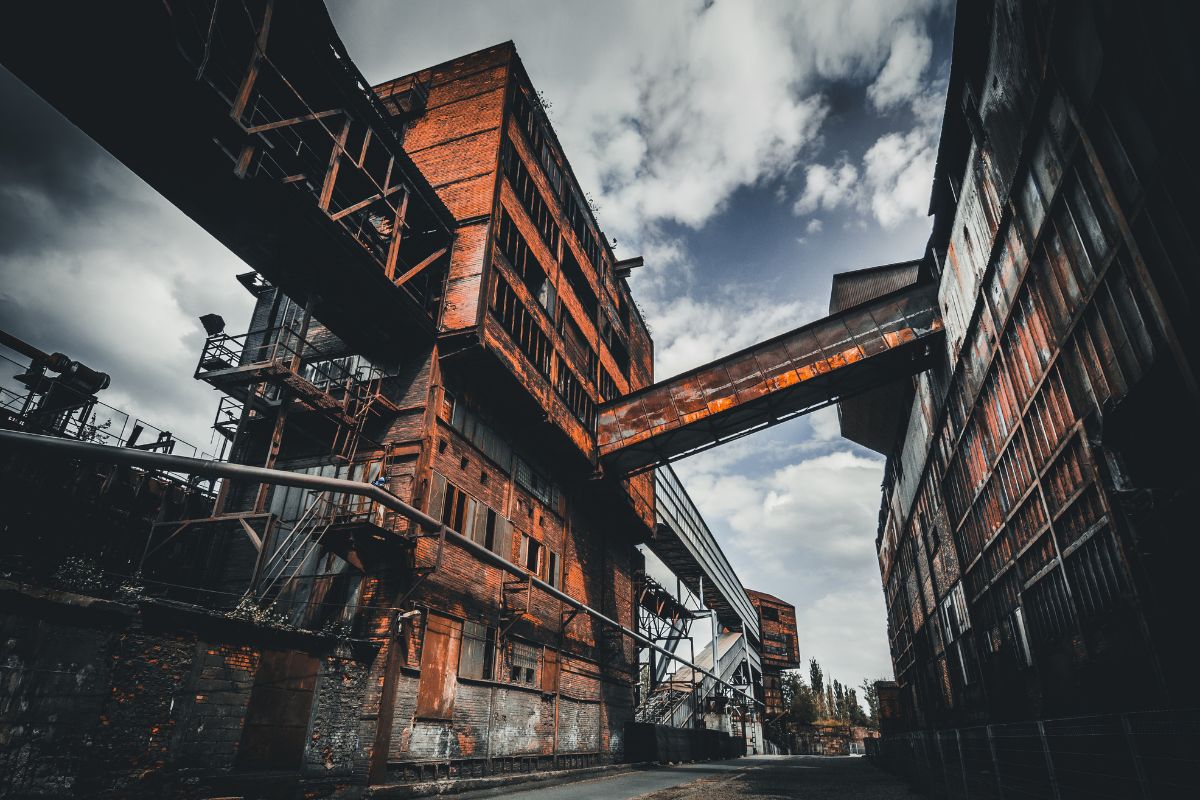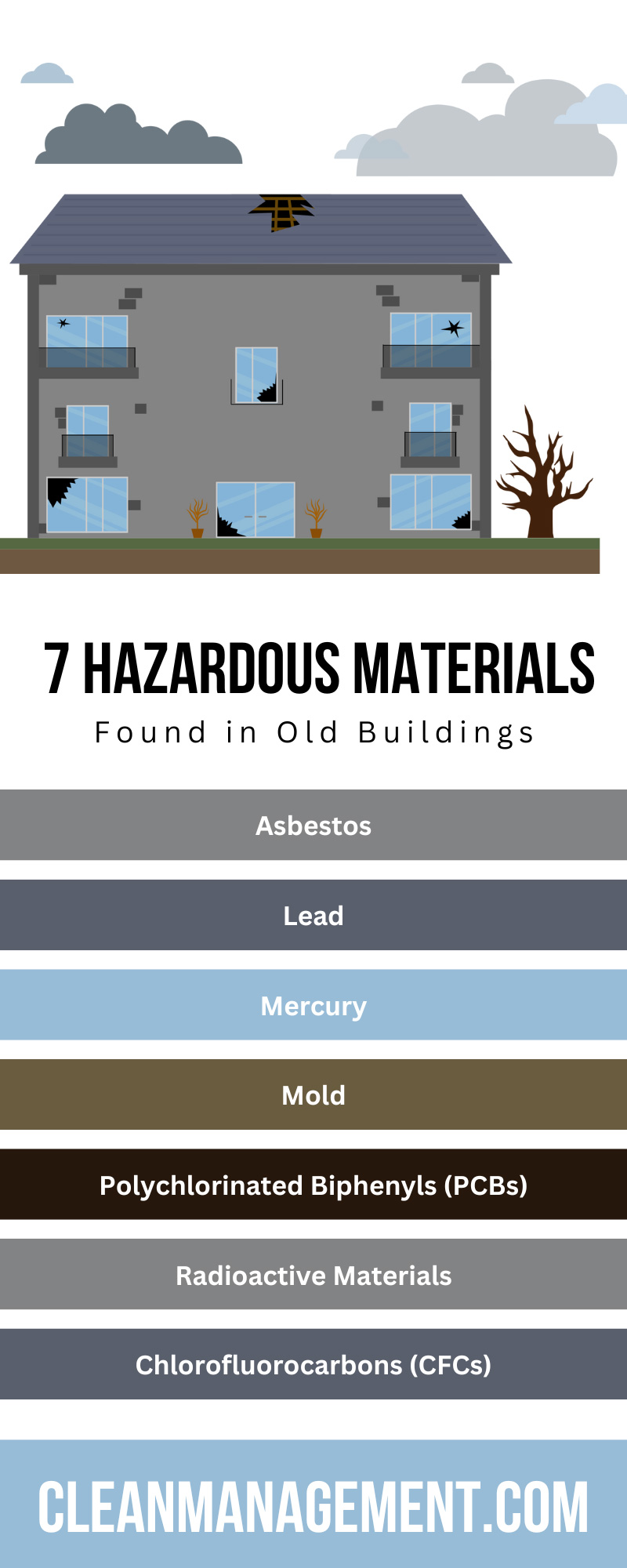7 Hazardous Materials Found in Old Buildings

Vintage buildings often have more charm, potential, and beauty than modern buildings, and with a little work, they can also be better investments. However, if you plan to do some renovations and rehabbing on one, be aware that some picturesque and noble structures also contain plenty of harmful materials and waste products. What starts out as a fun, challenging project can become a threat to your health and that of the building’s eventual residents. Before you start swinging that sledgehammer, take note of this list of seven hazardous materials found in old buildings.
Asbestos
Once upon a time, asbestos was considered a multi-purpose material to use in construction. Human beings have been mining asbestos for centuries. It’s a fibrous silicate material known for its resistance to fire, and it comes in six different types: actinolite, amosite, anthophyllite, crocidolite, tremolite, and chrysotile. Asbestos is a remarkable substance, and for a long time, people used it in construction as a component of insulation, tiles, shingles, cement, textured paints, patching compounds, and wrapping pipes. That should give you a solid impression of how much asbestos may be hiding away in an old building. The EPA banned asbestos sometime in 1978, but it’s still out there. When people disturb asbestos in old buildings, its dust and particles can enter the lungs and cause diseases like mesothelioma, asbestosis, and lung cancer. Asbestos must be carefully removed by trained professionals using special equipment.
Lead
Lead is another material that seemed like a good idea at the time, but it has proven to be a grave danger. Manufacturers included lead to help paint dry faster, last longer, and resist moisture. Unfortunately, lead paint is a lingering and hidden hazard in old buildings. As it chips and peels, it releases lead into the area, which toddlers and young children might breathe in or eat—the lead grants the chips a sweet taste. Lead can cause cognitive impairment and developmental delays in children and memory loss, dizziness, headaches, and high blood pressure in adults. Removing lead paint, like asbestos, requires special equipment and certified professionals. Otherwise, the dust can poison the unwitting remover or linger and re-emerge later on.
Mercury
This liquid metal, also known as quicksilver, looks cool, but it is a serious and even deadly health hazard. If mercury enters your system, it can cause gastrointestinal and kidney damage, wreak havoc with your nervous system, create emotional and mental disorders, and possibly cause cancer. In a vintage building, mercury hides in multiple spots. It was used in various devices, such as thermostats, thermometers, old fluorescent light fixtures, regulators, and old boiler heating systems. During demolition or renovation, professionals must handle these items carefully to avoid mercury spills. Electricians can recognize and properly handle and dispose of old, mercury-using devices.
Mold
Where there’s moisture, there’s the possibility of mold growth. Beyond its potential to grow and deface parts of the building, mold can be a sign of internal damage, such as a leaky roof or bad ventilation. Mold can also irritate and damage the respiratory system and can affect the health of asthma sufferers, smokers, and individuals with immunocompromised systems. Property owners can curb mold by fixing leaks and attending to humid and enclosed areas. While less of a hazard than asbestos, lead, and mercury, it’s wise to wear a mask and gloves while cleaning up a space. Some molds, such as black mold, can cause more issues than others.
Polychlorinated Biphenyls (PCBs)
PCBs were popular in the construction industry from the 1950s to 1979. Manufacturers intended for them to provide greater durability, flexibility, and fire resistance to paint, electrical equipment, plastic parts, fluorescent light ballasts, caulking, transformers, and capacitors. They were banned in 1979, as evidence arose indicating that they caused cancer and damage to the nervous system, immune system, reproductive system, and endocrine system. Properly equipped and certified professionals should locate, remove, and dispose of PCBs.
Radioactive Materials
Yes, it’s true. Sometimes, radioactive materials found their way into everyday technology and home construction materials. Building materials such as cement, tiles, and other stones can contain radon gas, which can leak into the air. The byproduct of the decay of uranium in the earth, the gas can also infiltrate the soil beneath a building and dissolve into well water. Antique clocks, smoke detectors, fluorescent lights, exit signs, and other fixtures have also been known to contain trace amounts of radium, tritium, and other radioactive elements. Disposal may require special handling, but generally, it’s best to avoid extended contact with such devices—don’t try to crack them open.
Chlorofluorocarbons (CFCs)
CFCs showed up in hundreds of products over the past century, turning up in aerosol cans and cooling systems. When experts realized that CFCs contributed to the hole in the ozone layer, they worked to ban the sale and distribution of devices containing CFCs. But they’re still out there. In vintage buildings, they tend to appear in old equipment and materials such as insulation foam, refrigerator units, air conditioners, and other systems used to cool things down. Such devices require careful disassembly and draining prior to disposal.
Next Steps
As you work with an older structure, a respectable contractor should perform an inspection, taking samples and testing them, and otherwise looking out for the above things and more. Once they identify the hazards, they’ll outline a plan for removing and disposing of them. Plan accordingly by preparing a budget that recognizes this possibility. It’s well worth it in the long run. Left untended, these hazards can hurt people and the planet and might leave you open to legal actions and bad publicity. It may take extra time, money, and effort, but it’s your responsibility to handle these little problems before they become big ones.
That’s a breakdown of the seven hazardous materials found in old buildings. Part of any major project involving an older building will likely involve the finding and removal of such materials. Hiring a crew of certified professionals who specialize in industrial waste services is the best course of action to ensure the health and well-being of future residents and/or tenants!

